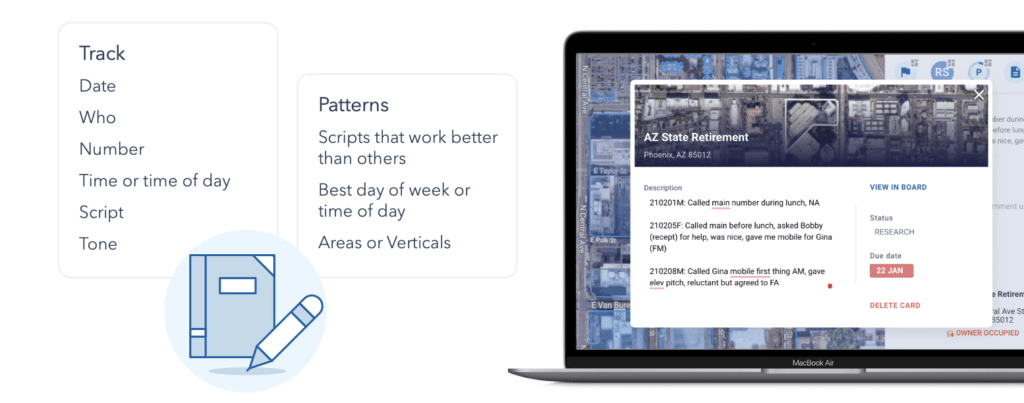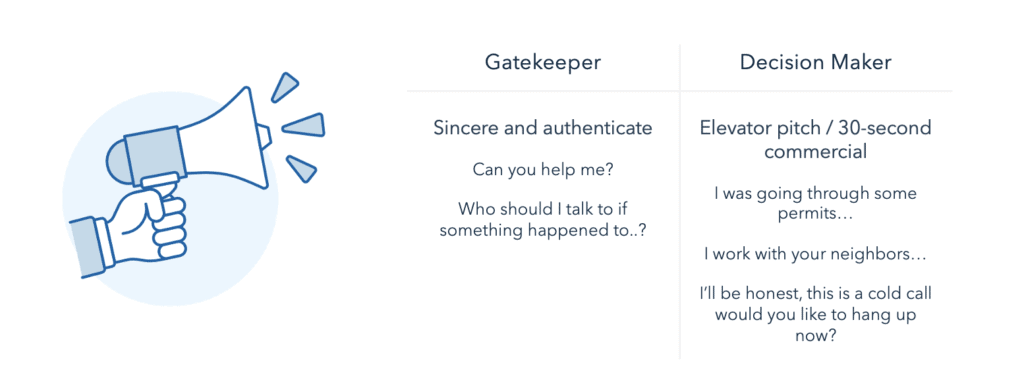Working in sales is hard, and cold calling can be the hardest part of all. You have to fight through fifty “nos” to get one “maybe,” and all the while, your sales quota is breathing down your neck. It’s no wonder that many of the sales reps we work with avoid outbound prospecting; it’s easier to rely on referrals or upsell your existing customers than to put yourself through cold calls that are inefficient and demoralizing.
Sales prospecting is both an art and a science, and the reason so many reps struggle with it is that they neglect one facet or the other. Reps who are all art get discouraged because they don’t have processes in place to understand and replicate their successes. Reps who are all science don’t make the human connections that close deals. So we’ve created eight sales tips (adapted from our popular webinar) to help you confidently seize the reins of prospecting.
Sales tip 1: Create a focused environment for sales calls
It takes focus to turn a cold call into a lead, so make sure you’re in an environment that helps you be fully present. Find a place free from clutter and distractions, where you know you can have an hour of uninterrupted work. That might mean stepping away from your desk. It’s hard to get in the zone if you’re surrounded by sticky notes, loose papers, and loud officemates, so consider booking a conference room for your sales blitz. If you’re working from home, consider moving to the kitchen or bedroom, wherever you feel most at ease.
Creating a focused environment also means eliminating digital distractions. So turn off notifications on your phone, close any extra tabs on your web browser, and sign out of Slack.
Now you’re ready to get started.
Sales tip 2: Prospect by segment
When you’re doing an outbound sales blitz, focus on one segment of your target customer base at a time instead of jumping around from one call to the next. You can’t execute a sales strategy if your sales process is chaotic and you’re constantly tailoring your message to a different audience.
In some industries (B2B software companies, for instance), the marketing department does a lot of the segmentation work by creating buyer personas. But in other businesses (like commercial services), reps are often flying blind. They might visit every property on a city block, even though those prospects don’t have anything in common except location.
But when you prospect based on segments, you can tie every call back to your strategy. For instance:
Competitor: We have a known advantage over their current service provider
Size: We are only interested in properties above a specific square footage
Property type: We have a goal of serving 30% of the hospitals/schools/hotels in this region
When you prospect this way, your sales team can actually function as a unit, and your sales managers will be grateful.
Sales tip 3: Set honest and reasonable goals
Prospecting is like exercising: It’s better to be consistent than wildly ambitious, or you’ll find yourself burned out and disappointed. Several studies have shown how important it is to celebrate “small wins” in order to stay motivated, but it’s challenging for sales reps to find these opportunities for celebration. Because let’s face it: No matter how hard you work at prospecting, you’re still going to hear “no” a lot more than “yes.”
So don’t measure your success by your number of sales or even first appointments; set prospecting goals that reflect the work you put in and not all the factors that are out of your hands. For example, make your prospecting goal the number of cold calls you make in a week, the number of properties you visit, or the number of follow-up emails you send.
Sales tip 4: Take strategic notes
You can’t improve your sales techniques if you don’t keep track of what works and what doesn’t, so take notes from all your calls. Don’t just record the obvious stuff—like who you talked to and whether you scheduled a follow-up—record things like the time of day, the other person’s tone, and what script you used.
Note-taking helps you notice patterns you might otherwise miss. For instance, you might discover that all your calls on Friday afternoons fall flat or that customers in a specific vertical respond better to a specific script.

Capture notes beyond the basic details to reveal patterns about your prospecting efforts
Sales tip 5: Run cold call blitzes
The best way to get in a sales prospecting groove is to block off time where it’s all you do. Cold calling for an hour or two at a time helps you race through your prospecting list, shrug off rejection, and collect information. When you’re done, you can look over your notes and find opportunities for improvement. The more calls you make, the more data you collect, and the more sophisticated your insights will be.

Block time for calling, and consider scheduling a team cold call blitz
Sales tip 6: Have multiple sales scripts
When you make a call, you need to have some prepared remarks that you can rattle off. But don’t give your carefully honed elevator pitch to the office manager! Not only is it a waste of time, but it can also actually hurt your chances of getting through to the person with purchasing power.
You really need two speeches: one for the gatekeeper (the person answering the phone) and one for the decision-maker (the person holding the purse strings).
With the gatekeeper, the most important thing is to appeal to their humanity and ask them to help you. After all, you’re not selling to this person—just trying to convince them to put you in touch with the boss.
When you’re talking to the decision-maker, that’s the time to break out your big pitch. Your decision-maker script should be tailored to the specific person on the other end of the line, showcasing how much you already know about their pain points and business needs. That means you need to have research materials organized and close at hand, so you’re not fumbling through notes or giving them a generic pitch. (That’s where a tool like Atlas comes in handy.)

Conversations should differ based on who picks up
Sales tip 7: Be persistent with follow-ups
Decision-makers will often put you off by saying, “I can’t make a purchase right now, but maybe next quarter/when I get funding/when my current contract expires.” But sales reps often hear “not right now” and turn it into a “no.” It’s understandable since if you were asking someone out on a date and they told you to try next year, that really would mean they weren’t interested. But in all likelihood, a lot of those prospects are telling the truth when they invite you to call back in a few months.
When a prospect tells you to try again later, tell them you absolutely plan to. After you get off the phone, show you’re serious by engaging in some light outreach, such as connecting on LinkedIn. Then leave yourself a reminder for the given date, along with the notes from your original call. (And pro tip: Put that reminder in your sales software or CRM, not a sticky note on your desk.) You’ll be going into that second call with an advantage since you’ve already made contact with this prospect, and by following up, you’re proving that you’re someone who keeps their commitments.
Sales tip 8: Believe in your product—and yourself
Like we said: Working in sales is hard, and it’s easy to get discouraged. Some people will always associate salespeople with greasy used car dealerships and use that as an excuse to be rude or mistrustful. But don’t let those people derail you, and don’t take their judgments personally.
When you feel yourself getting into a “slump,” remember that people really do need your service. You are connecting customers with a product or service that will help them and that you believe in. The best way to nurture this belief (and refine your sales pitch) is to be as knowledgeable about your product as possible. When you’re confident in your product’s value, you can take on difficult pricing discussions without backing down, coast through sales presentations, and guide potential customers through their buying decision. So don’t get stagnant; keep learning and stay excited about what you’re selling. The best sales professionals know that genuine expertise and enthusiasm are the most effective sales tools of all.
Take control of your sales calls
The most intimidating thing about cold calling is that it feels like all the power belongs to the person on the other end of the line. But when you follow these sales tips, you can take back a sense of power because each call isn’t a win or lose scenario; it’s a chance to learn, experiment, and improve your overall strategy.
Share





